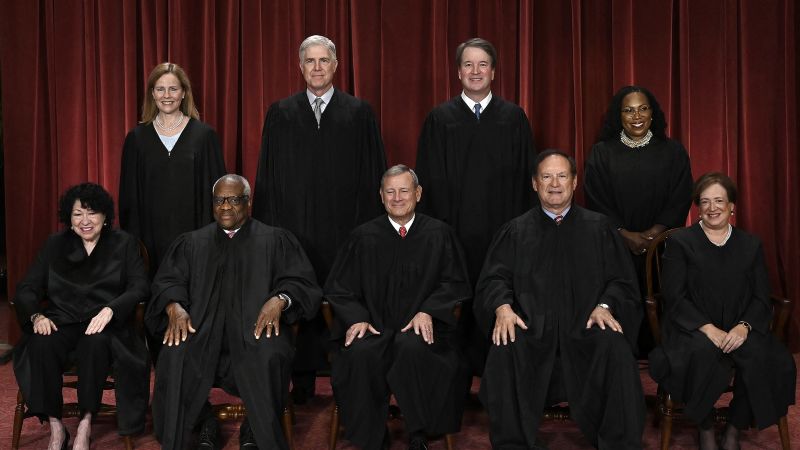
Washington
CNN
—
The fate of President Joe Biden’s student loan forgiveness program that would impact scores of borrowers from a wide array of colleges and socioeconomic backgrounds lies in the hands of nine relatively wealthy people who graduated from a short list of elite private schools.
When the Biden administration goes before the Supreme Court Tuesday to defend the program, which would offer up to $20,000 of federal student debt forgiveness to millions of qualified borrowers, they’ll be making their arguments to a small group of jurists who are far from being representative of the borrowers that could benefit from the relief.
The justices’ salaries alone set them apart from most of the country: Chief Justice John Roberts will make $298,500 in 2023, while each of the associate justices will bring in $274,200 this year for their service. That doesn’t include any revenue from outside sources, like book deals.
The court is also comprised of some of the nation’s brightest legal minds from a small number of prestigious schools, yet another factor that underscores their distance from the borrowers who could benefit from the debt relief assistance. Most of its current members attended one of two Ivy League law schools: Harvard and Yale.
Roberts, along with Justices Ketanji Brown Jackson, Neil Gorsuch and Elena Kagan all attended Harvard Law School. Justices Sonia Sotomayor, Clarence Thomas, Samuel Alito and Brett Kavanaugh went to Yale Law School. The only current justice who is not part of the Ivy club is Amy Coney Barrett, who received her law degree from Notre Dame.
Some of the justices had financial assistance to help them attend school: Thomas received a scholarship from Holy Cross College to pay for his undergraduate degree there, while Sotomayor attended Princeton University and Yale Law School on scholarships. And they have come from different backgrounds with different politics. Thomas, for instance, grew up in poverty in Pin Point, Georgia, and is the court’s leading conservative justice.
And to be sure, students who took out federal loans for undergraduate programs at private schools could be eligible for the relief. In fact, those students took out more debt than their public school counterparts in recent years and at slightly higher rates, according to data from the College Board.
The relief is designed to aid borrowers who are at highest risk of delinquency or default. Once debt cancellation begins, the plan could offer up to $10,000 in student loan debt relief to eligible borrowers making less than $125,000 ($250,000 per household). In addition, borrowers who received a Pell Grant can receive up to $20,000 in relief.
“I think it’s fair to say that (the justices) didn’t live the experiences of the people that benefit from the president’s debt relief program. And it’s important for them to go into this case understanding the limits of their own life experience and how that might affect their ability to be impartial considering case,” said Mike Pierce, executive director of the Student Borrower Protection Center, which urged the justices to uphold the relief program in a friend-of-the-court brief.
Pierce said he’ll be looking to both Sotomayor and Jackson to pose “questions trying to tee up the experiences of the people that will benefit to help give the solicitor general the opportunity to really lay out the government’s economic rationale – the emergency that it sees and the reason that it took this big action.”
The Department of Education received about 26 million applications for debt relief by the time a federal district court judge blocked the program in November. More than 16 million of those borrowers’ applications were fully approved and more than 40 million borrowers would qualify for the program, according to the administration.
In addition to their cozy government salaries, some of the justices have been paid handsomely through lucrative book deals or teaching gigs, according to their financial disclosures, which provide limited information about their finances, those of their spouses and various reimbursements for travel. Among that group is Sotomayor, Gorsuch and Barrett, who have all received over six figures in book royalties or publishing deals in recent years.




